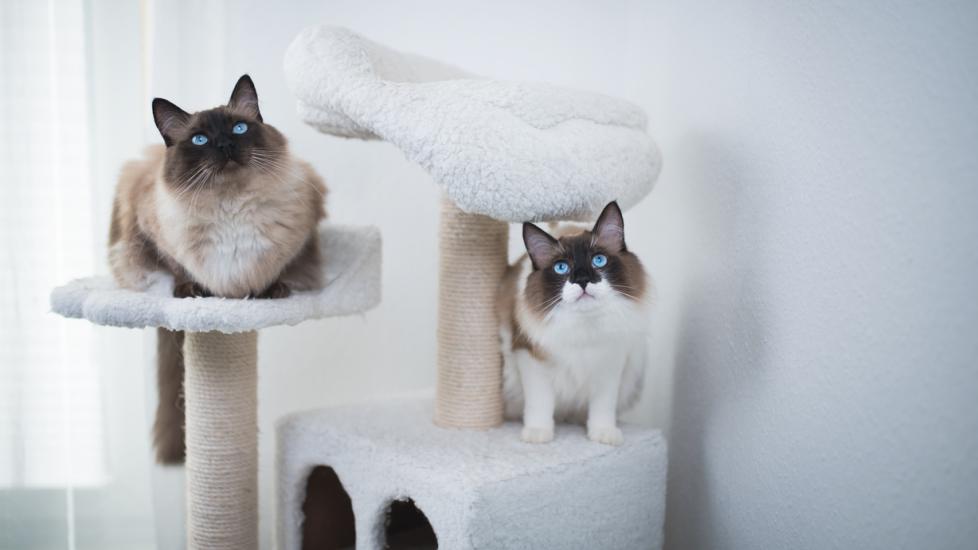Bruising in Cats
It might be alarming to come across a purplish spot on your cat’s skin, especially if you weren’t even aware they had been injured. Read on to find out how to identify a bruise on your cat, what causes bruises, and when the situation needs immediate veterinary care.
What Does a Bruise on a Cat Look Like?
Bruises on cats are not commonly seen—in part because cats do not get them often but also because they can be hard to see with all the fur. To figure out if your cat has a bruise, carefully part the fur and look at the skin. In the veterinary hospital, the staff may shave the fur to see the skin better.
A bruise on cat skin will look much like a bruise on human skin: a reddish, purplish spot under the skin caused by a pooling of blood. These bruises may be quite large (sometimes called ecchymosis) or very small (often called petechiae). The bruise may be located anywhere on the body, including on the thinly haired areas like the inside of the ears or on the mucus membranes in the mouth.
What To Do if Your Cat Has a Bruise
If you witnessed the event that caused the bruise (such as your cat falling off the refrigerator) and they are acting perfectly normally, it may be okay to just keep an eye on them. However, any trauma that was big enough to cause a bruise most likely warrants the need for a veterinary visit. It is difficult to identify internal injuries at home.
If you find a bruise on your cat, schedule a visit to your veterinarian. Though it might be the opposite of what you’d expect, often smaller bruises (sometimes only a few millimeters in size) are more significant. If you are seeing tiny red spots on the inside of your cat’s ears, in their mouth, or on the thinly haired areas of the belly, this may be a medical emergency, and should be examined immediately. Also, watch for any signs of blood in the urine. The combination of bruising and blood in the litter pan is also a medical emergency.
What Causes a Bruise on a Cat?
Bruises in cats are not commonly diagnosed, so veterinarians are generally concerned when they are found. Perhaps the most common cause of a visible bruise is from an injury—such as a bad fall, being grabbed by a dog, or being hit by a car. In these cases, the injury is probably much bigger than the bruise.
There are also circumstances when the bruise itself is a sign of an underlying disease. An immediate concern is whether the body can clot properly after the minor bumps and bruises that are part of daily life.
Other concerns include reactions to medications and whether they have enough platelets in their blood (and if they are working correctly). Immune-mediated diseases as well as inflammation (swelling) from viral illnesses can also cause the body to form bruises unrelated to injury.
Cats will occasionally develop bruises near an incision after a surgery, but if the bruise is large, it may be cause for concern. If you notice anything out of the ordinary, including any bruising after surgery, connect with your veterinarian.
How Veterinarians Diagnose Bruises in Cats
Veterinarians will take a thorough history and look for underlying factors that might have caused or contributed to a bruise. They will also do a physical exam, checking the skin and gum color and looking for abnormalities that will help show the cause.
Almost always, bloodwork will be needed to check the cells that help the blood to clot (the platelets). Other tests—such as for liver and kidney function, viruses, and urinalysis—may be needed depending on your cat’s situation.
Treatment for Cat Bruises
The treatment for bruises will depend on their cause. A cat that is bruised from a minor injury may need no more treatment, while one that has an immune-mediated condition may need a blood transfusion and intensive care. If the cat has been poisoned with a rodenticide, careful treatment for that poisoning may be needed.
Fortunately, with early diagnosis and quick treatment, most cats will recover fully from their bruising. But the sooner the problem is identified, the better—so be sure to call your vet as soon as you see any bruises on your cat.
Featured Image: iStock.com/Nils Jacobi
